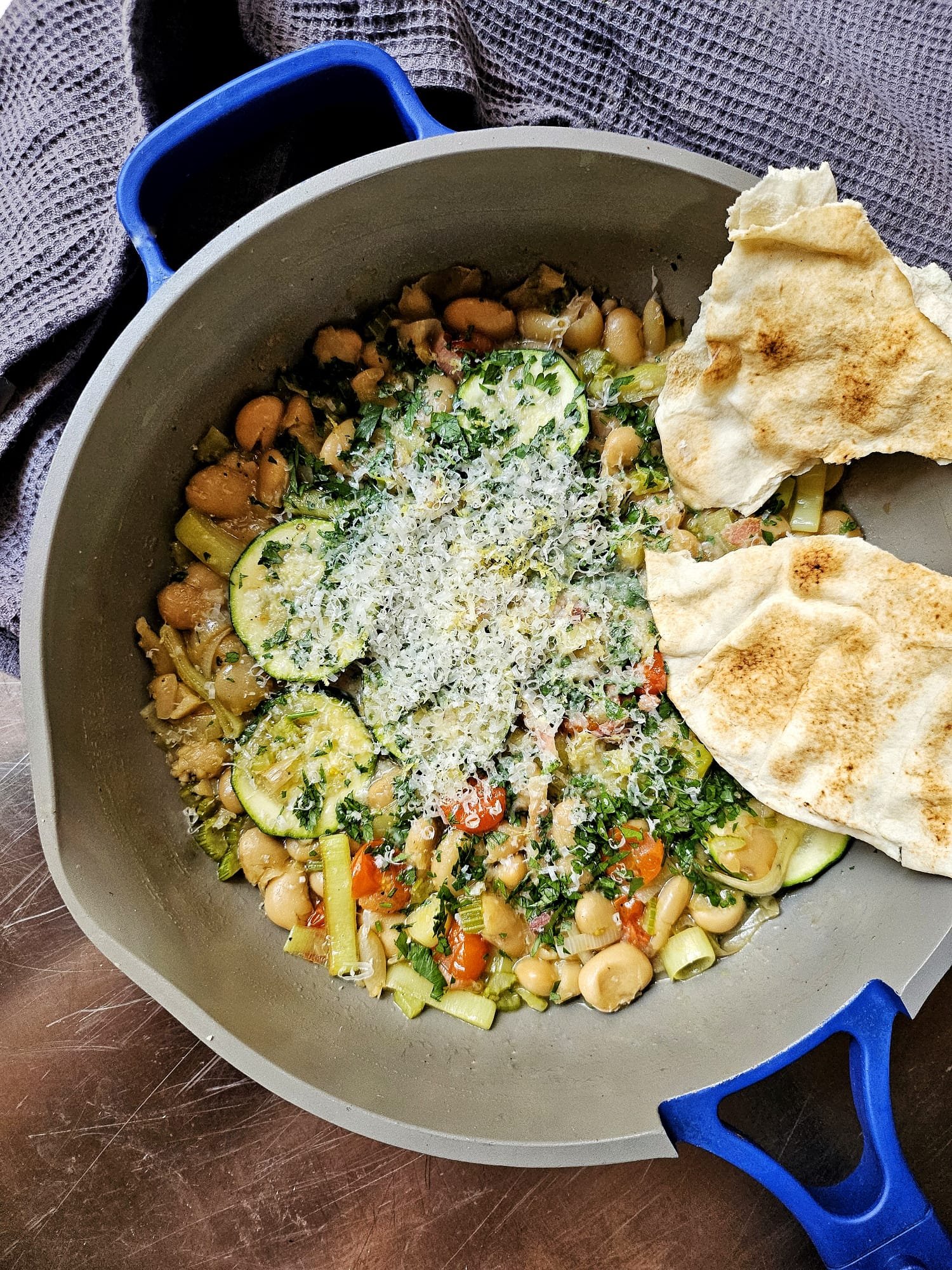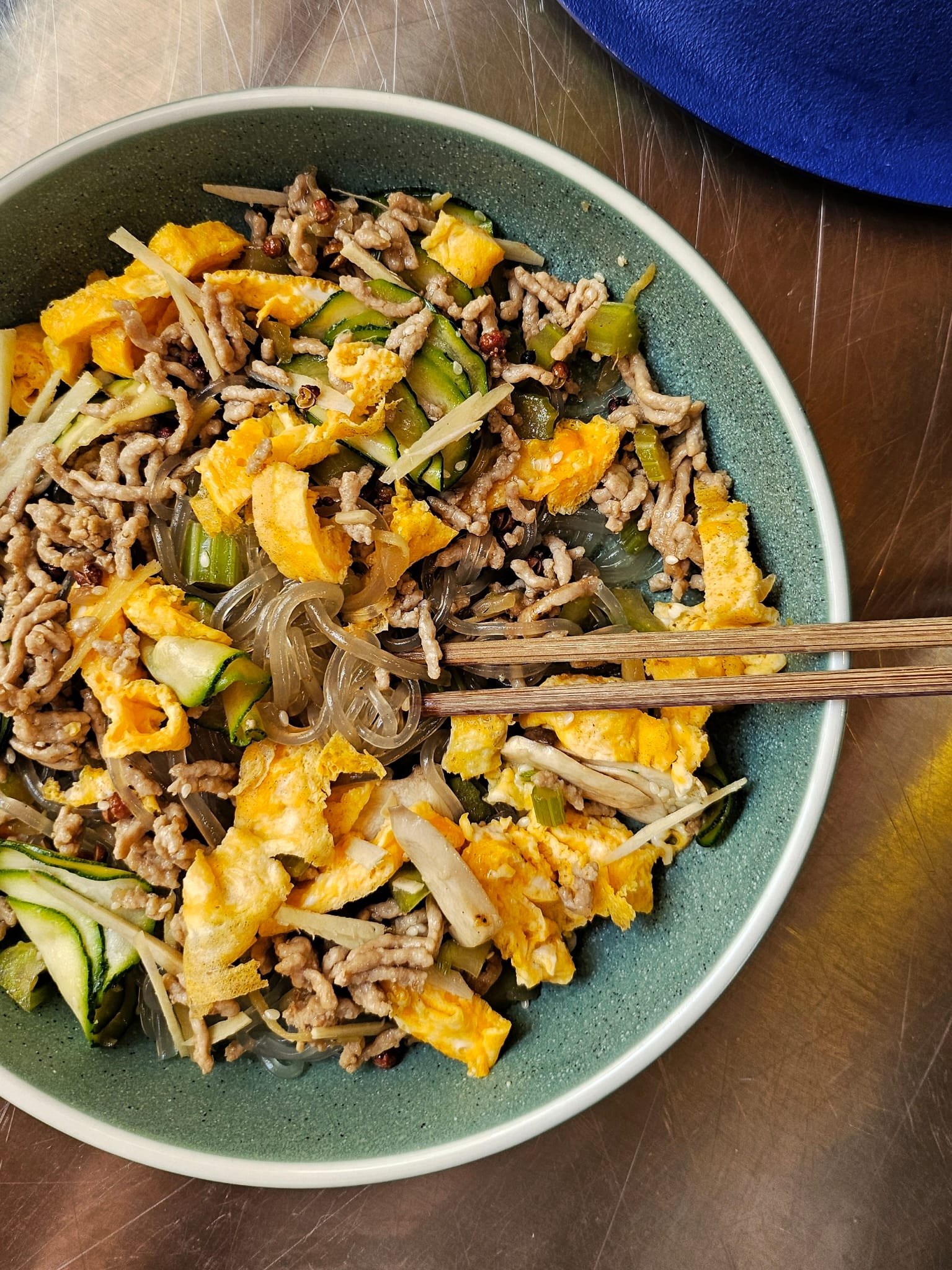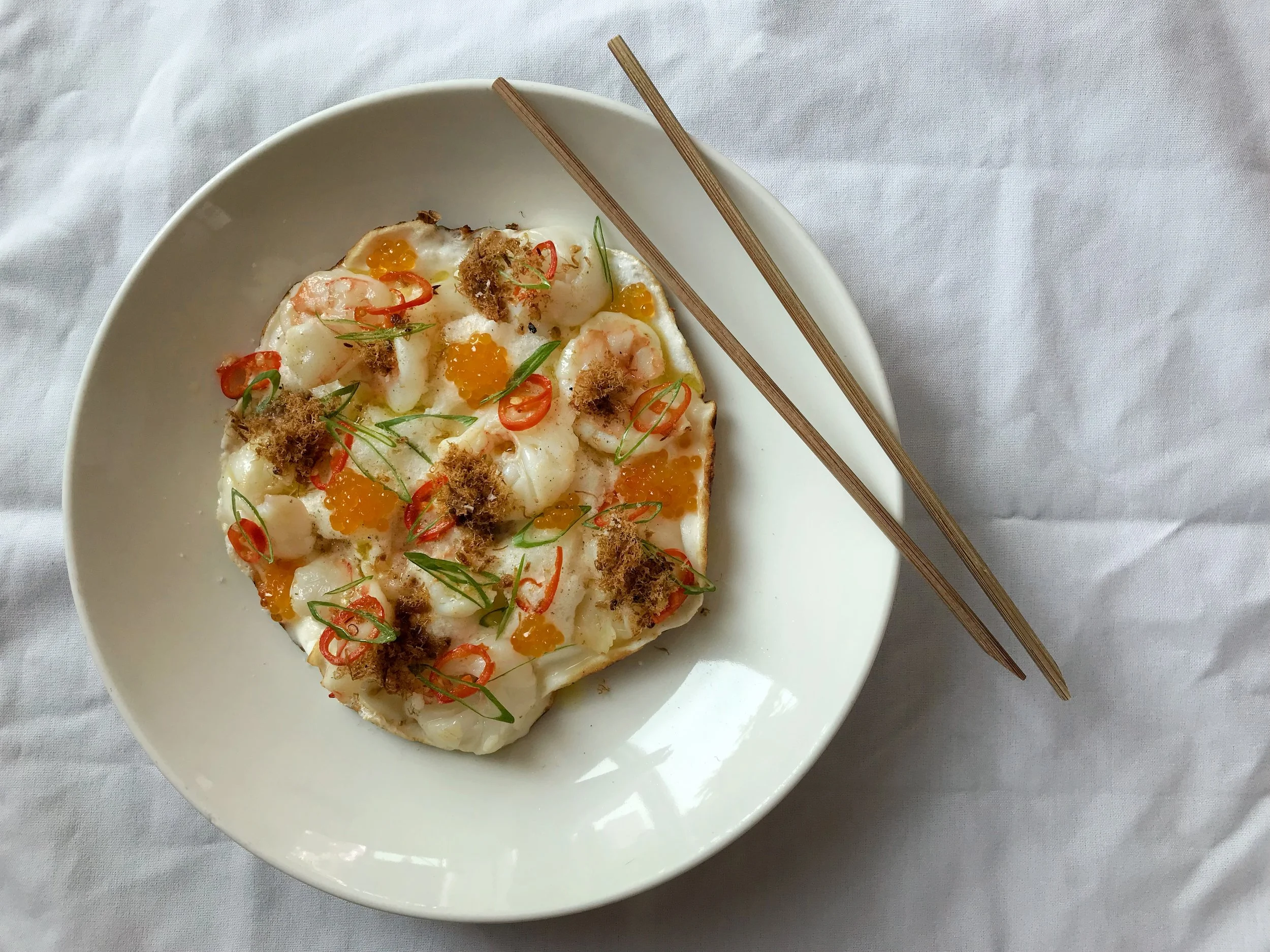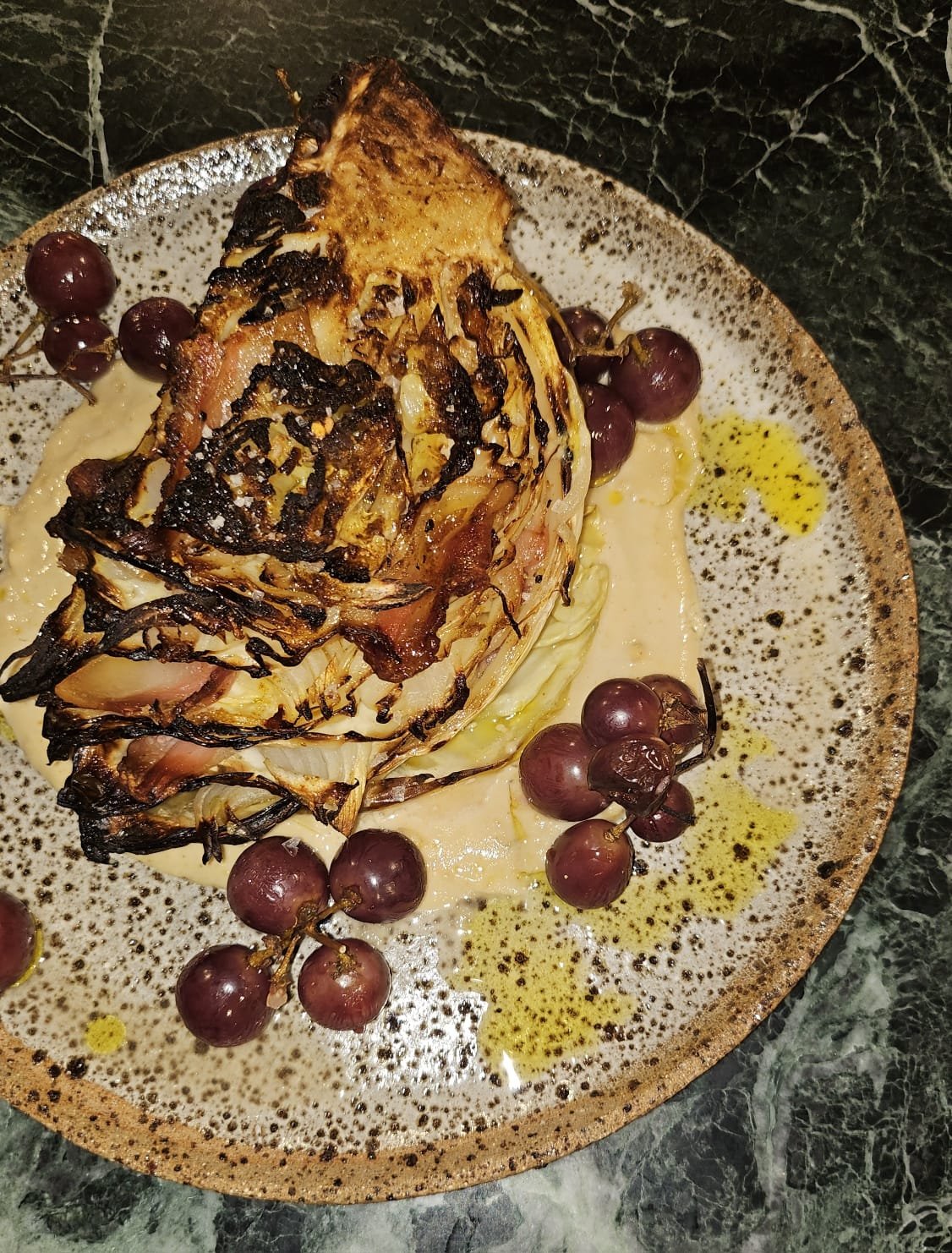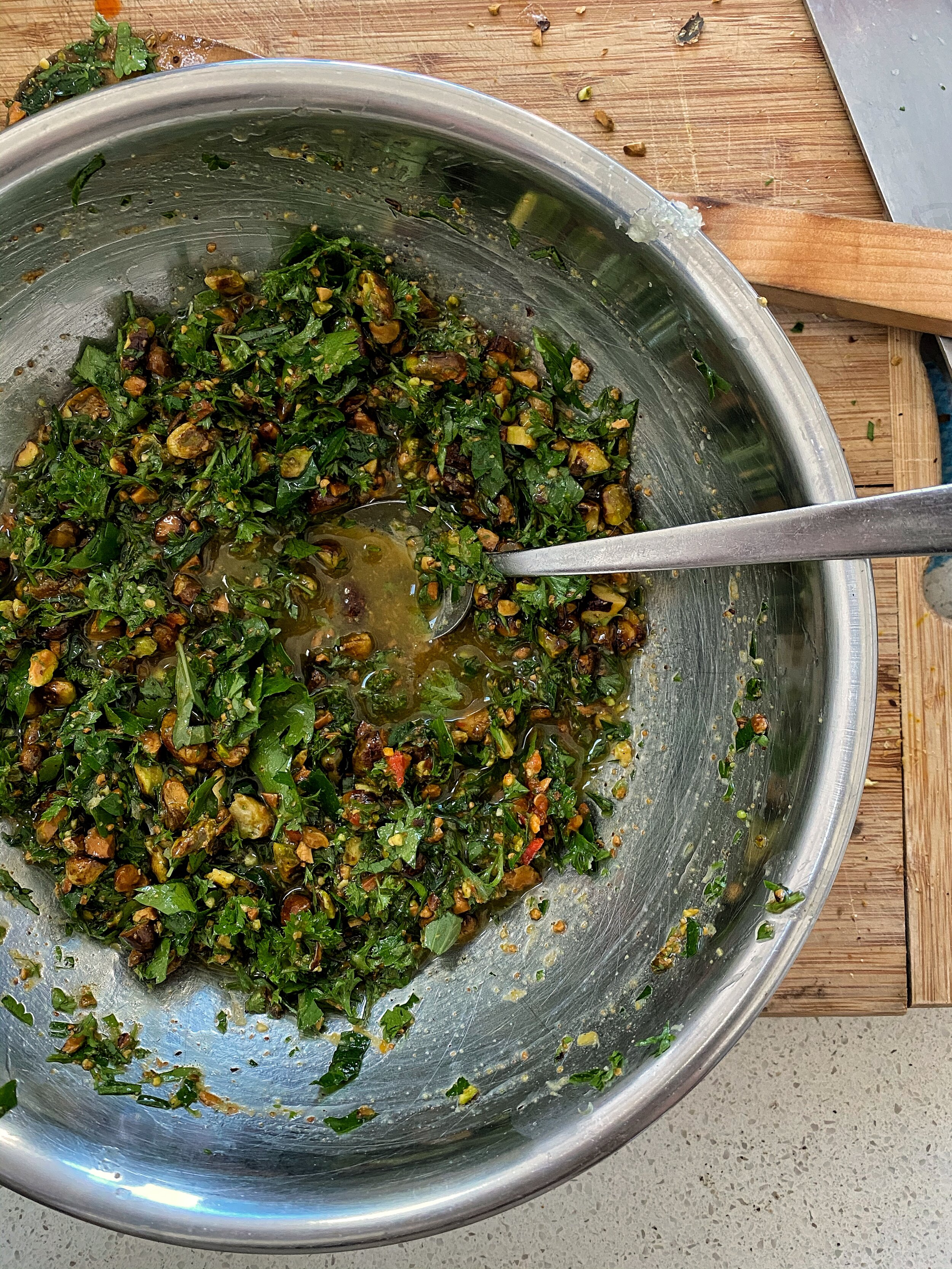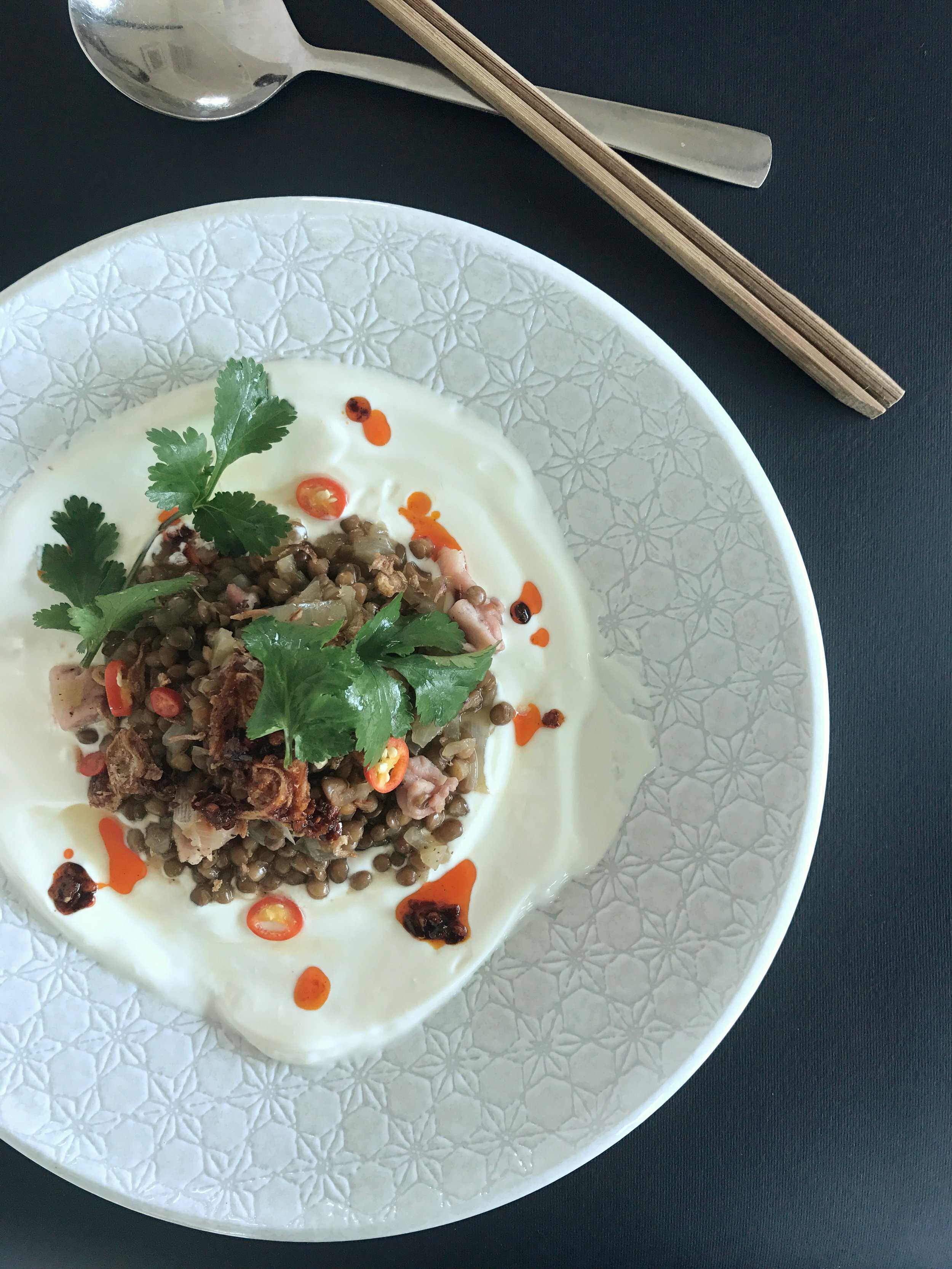Creamy braised butterbeans with leek, bacon, zucchini, and cherry tomatoes. A satisfying one pan meal that requires very few brain cells to produce, but is big on flavour and satisfaction.
I like to cook dishes like these when I'm tempted to order in, but know I needn't (do better, Mel).
Ingredients
1/2 leek, sliced into 1cm rounds
1 knob butter
1 rasher middle bacon, sliced into matchsticks
1 stalk celery, finely chopped
1 tin butterbeans, rinsed
1 cup chicken stock
1 handful small cherry tomatoes (or regular cherry tomatoes, halved)
1/2 zucchini, sliced into 1/2cm rounds
To serve:
A handful flat leaf parsley, finely chopped
Parmesan, microplaned
1/4 lemon, zested
salt and black pepper, to taste
Method
Soften half a leek sliced into rounds in butter for 1-2 minutes on medium heat, then add in a handful of sliced bacon and a stalk of celery, finely chopped.
Once the celery is translucent, add in a tin of rinsed butterbeans, a cup of chicken broth, and allow to simmer for 10 minutes.
Add in a handful of small cherry tomatoes. When everything starts to soften as one (another 10-15 mins), use the back of a wooden spoon to gently smoosh some of the beans and tomatoes to help it all amalgamate.
Add the sliced zucchini and season to taste with salt and black pepper. Simmer until the broth and beans come together happily in a thick saucy consistency (you'll know).
Finish with finely chopped flat leaf parsley, grated Parmesan, lemon zest, and a subtle blessing of olive oil.
Serve with good bread. We like that stuff.
P.s the super cool blue pan was a gift from Our Place. 💙
